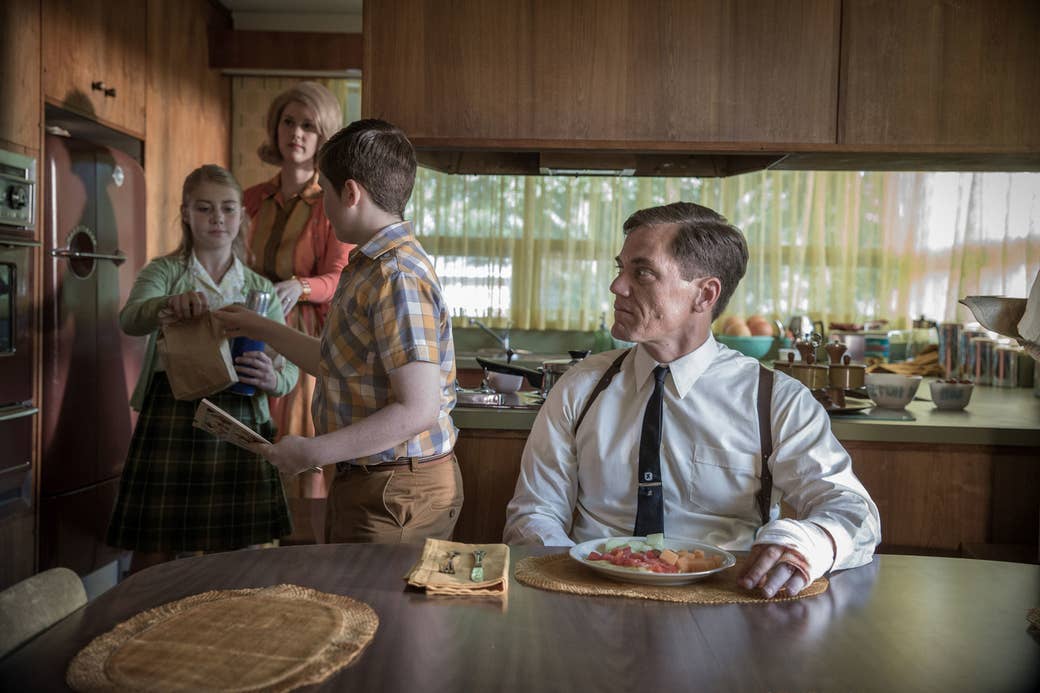
The Baltimore we see in The Shape of Water is on the cusp of a decline. It's the early 1960s, in "the last days of a fair prince's reign" (as a voiceover fancifully describes the JFK presidency), and it's also early in what would become more than a half-century of white flight, deindustrialization, and crime eroding the city's population. This being a Guillermo del Toro movie, the hints of the eventual hollowing out of neighborhoods are depicted with the same sense of grandeur as the unlikely love story that follows, done up in deep, rich colors and moody lighting. Main character Elisa (Sally Hawkins), for instance, inhabits an enchantingly ragtag apartment perched above a fading movie palace, with bits of dialogue drifting through the floorboards from the mostly empty theater below.
Elisa, like most of The Shape of Water's characters, lives in the city. But the film's villain, a malevolent government suit named Richard Strickland (Michael Shannon), does not. When he heads home, he swings his chrome-detailed car away from downtown and toward a breezy street lined with trees and mid-century houses that feels like it might as well be another universe, one in which the sun somehow shines brighter and milkmen scurry by in crisp white shirts. In a way, it is another universe — the America that Strickland, a monster born of his era's darkest paranoid patriotism, is striving for. He works for a God he imagines looks a lot like him, and for a country of Cadillacs and jetpacks and chipper nuclear families and racial uniformity. "The future is bright. You gotta trust in that. This is America," he tells his son, the affirmation of a new manifest destiny in which those vintage, sitcom-worthy 'burbs would stretch from coast to coast. He makes that optimism sound like a threat — and it is, to anyone who’s not included in its vision of progress.
The myth of the suburbs as a wholesome, throwback refuge has taken a pummeling at the movies this year, from the sinister opening scene of Get Out to three fall prestige releases — The Shape of Water, Suburbicon, and Downsizing — that all take their own stylized runs at a similar idea. That sense of suburban sprawl as a repository for an outdated American dream haunts del Toro’s winsome creature feature very effectively; it also compelled and confounded directors George Clooney and Alexander Payne, both of whom made suburb-centric, award-season hopefuls starring Matt Damon. Whether it’s of the past or future, these movies all conjure an idealized suburban vision that lingers like a mirage in some part of our national consciousness. But they also demonstrate that it's not easy to go to battle with a concept.
Clooney's Suburbicon fizzled out soon after it hit theaters. Payne’s Downsizing seems poised to do the same when it opens this Friday. These are, not coincidentally, films that lob awkward critiques from inside the fantasy they're trying to dispel — from the point of view of characters who still enjoy a place in the planned community, even if their lives are not what they'd expected. The Shape of Water, on the other hand, is slipping toward the Oscars, maybe because it cleverly takes the tone of a myth itself, and maybe because it approaches the fantasia of the spacious house, the picket fence, the good schools, the good living — and everything else left unsaid — from the perspective of those who aren't included in it.
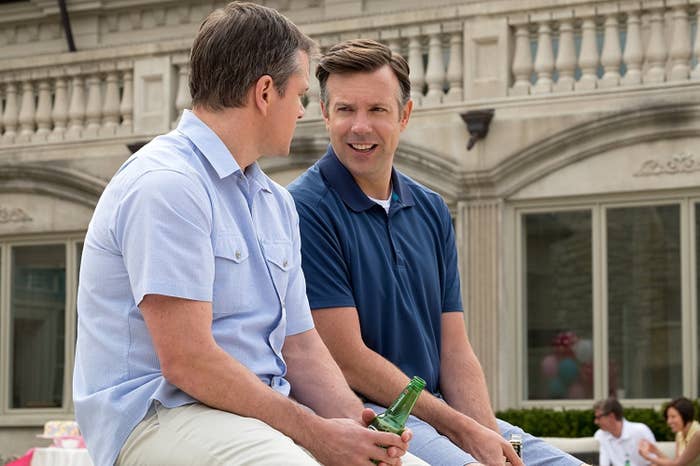
In March of this year, Business Insider ran a series on the death of the suburb, laying out an argument for how the demise of malls and McMansions, and the slump of casual dining restaurants and big-box stores, were indicators of a larger lifestyle shift. It wasn't that the suburbs were going away, the articles suggested (though the young and affluent keep clustering in cities where there are more jobs), it was that suburbs themselves were also shifting — toward walkability and denser, multifamily housing near public transit — becoming more citylike.
The promise of the traditional suburbs that Strickland heads home to in The Shape of Water, that Gardner Lodge (Damon) dreams of escaping from in Suburbicon, and which Paul Safranek (also Damon) goes to incredible lengths to afford in Downsizing, isn't a very 2017 sort of promise — even if Downsizing is set somewhere near the present day. What's driving this trend isn't an IRL push toward these communities, but a figurative one. The suburbs, especially the idealized, impossible communities of the late '50s in Suburbicon and early '60s in The Shape of Water, are what's meant to come to mind when someone talks about wanting to Make America Great Again.
Or, as the sign Tennessee congressional candidate Rick Tyler posted last year more starkly put it, "Make America White Again." Tyler defended himself by saying he wanted to return the country to the "1960s, Ozzie and Harriet, Leave It to Beaver time when there were no break-ins; no violent crime; no mass immigration." It's a fantasy of an era that people have sought everywhere, from the "whiteopia" of North Idaho ("it just felt like America in the 1950s") to the promises of Donald Trump, who pointed to "the late '40s and '50s" as the time when "we were pretty much doing what we had to do" as a country. Clearly, Tyler missed some lessons in the subtle art of dog-whistle politics, or felt that the need to disguise bigotry had passed, but either way, the direct connection he made between this particular breed of nostalgia and whiteness was almost a relief to finally hear spoken out loud. What was always there was finally brought to the surface.
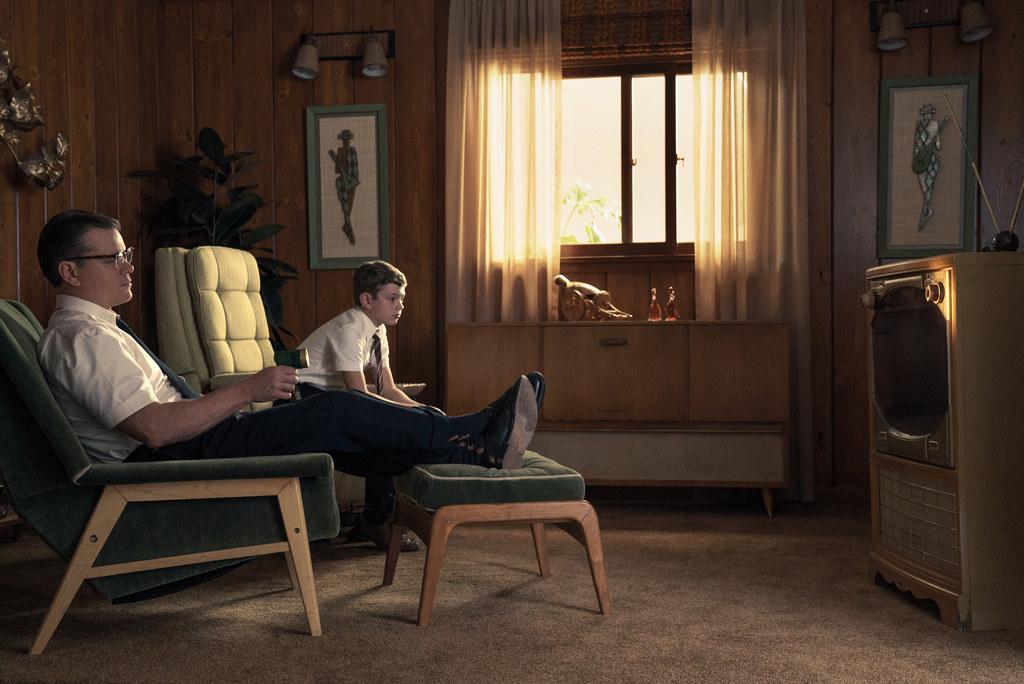
In fact, the idea of something warped lurking beneath the surface-perfect sheen of retro Americana is a juxtaposition that's now practically retro itself. That might be why Suburbicon, which attempts to illuminate the connection between “great” and white as if this reveal were a surprise, comes across as so toothless. The movie weds an old Coen brothers script about the dark side of an allegedly idyllic bedroom community (in which a boy, Nicky [Noah Jupe], slowly realizes there's nothing Father Knows Best about his seemingly upright dad) with a far more grounded story about a black family getting harassed after moving into the all-white neighborhood — and ends up doing justice to neither.
Even though, according to Clooney, Suburbicon began as a film about housing discrimination, and the Coen elements were added to provide "some form of entertainment," the end result is a movie in which the storyline about race feels like an afterthought. The black family that causes such an uproar in the neighborhood barely gets to speak; the escalating violence and hostility they face is a horrifying, but largely symbolic, development that’s eclipsed by the more madcap (and movie star–heavy) murder plot unfolding in parallel.
Clooney may have set out to criticize sentimentality toward the film's era and setting, but he turns out to be as susceptible to the aesthetic allure of the suburbs as anyone else. We can see that in the choice to have Julianne Moore reprise her brittle '50s housewife routine, to put Damon back in shirtsleeves and browline glasses, and to open the film with a chirpy slideshow advertising the amusingly narrow charms of the community for which it's named. Suburbicon is akin to watching someone do a standup set in front of a building that's on fire, trying to keep the viewer's attention with easy punchlines while a genuine menace blurs into the background.
Damon’s suburban dreams in Downsizing are more contemporary; it's upward mobility, or a lack thereof, that's on his mind. His character, Paul, is a kind and incurious occupational therapist who lives with his wife Audrey (Kristen Wiig) in his Omaha, Nebraska, childhood home. She has her heart set on a newer, bigger place in a nicer area they can't afford, and he struggles to make the finances work. While not unhappy himself, he's plagued by a nagging sense that he should be doing better than he is — keeping up with successful high school classmates, climbing the ladder. In other words, his economic anxiety is getting him down.
So, instead of scaling back their dreams, the couple decides to scale down their bodies with a new, irreversible scientific process in which people are shrunk to a few inches tall. This allows them to consume fewer environmental resources and, more importantly, live luxe miniature lifestyles on their regular-size bank accounts. It's a sci-fi variation on Americans going abroad to stretch their US dollars in developing economies, only instead of heading abroad, it involves heading to a Lilliputian-planned community in New Mexico called Leisureland. In Leisureland, everyone can afford a pool and jewelry and to while away their days like rich retirees.
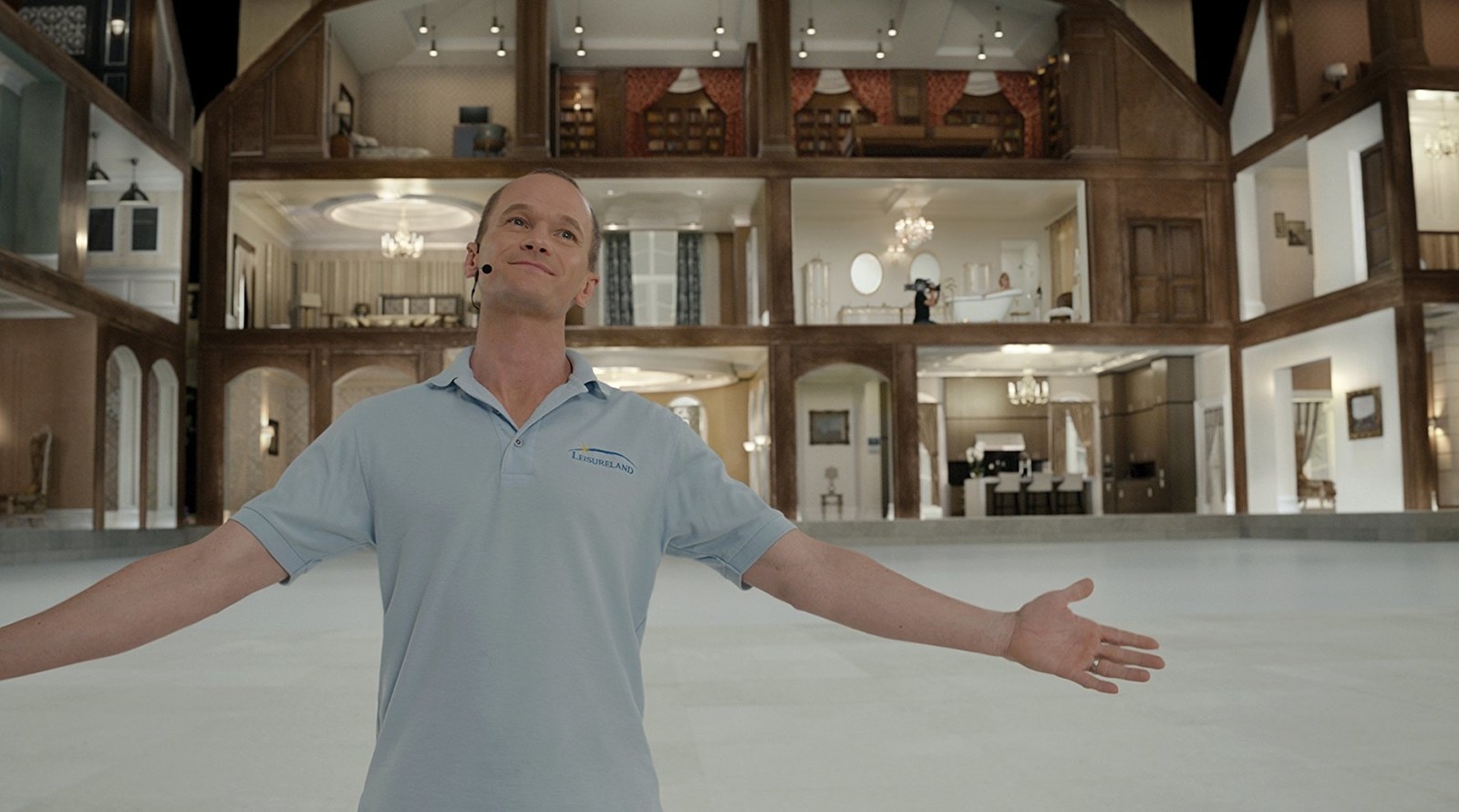
It's a different kind of suburban fantasy, but once you get past the droll, Charlie Kaufman-esque imagined technology, it's not too far removed from those gleaming visions from the '50s and '60s. Leisureland offers those same, outdated expectations of effortless prosperity and an unquestioned white majority, preserved the only way they can be — by way of extreme contortions and self-rationalizations. The characters in Downsizing risk a possibly lethal procedure in order to to afford a five-bedroom house and then pat themselves on the back and say they did it to save the planet from overpopulation.
It's a visually delightful metaphor, but it gets messier and less meaningful as soon as Paul makes his way to Leisureland's far reaches. There, downsized immigrants live in a miniscule tenement without the benefits and protections enjoyed by the main community, commuting in to clean and build and do all the other labor that people like Paul are trying to opt out of. As Downsizing sets out to teach the well-meaning, oblivious Paul some tough lessons about the world and his place in it (with assists from Christoph Waltz as an amoral, hard-partying European exporter and Hong Chau as a selfless Vietnamese refugee and all-around magical Asian), it begins to demonstrate the same myopic limitations of Suburbicon.
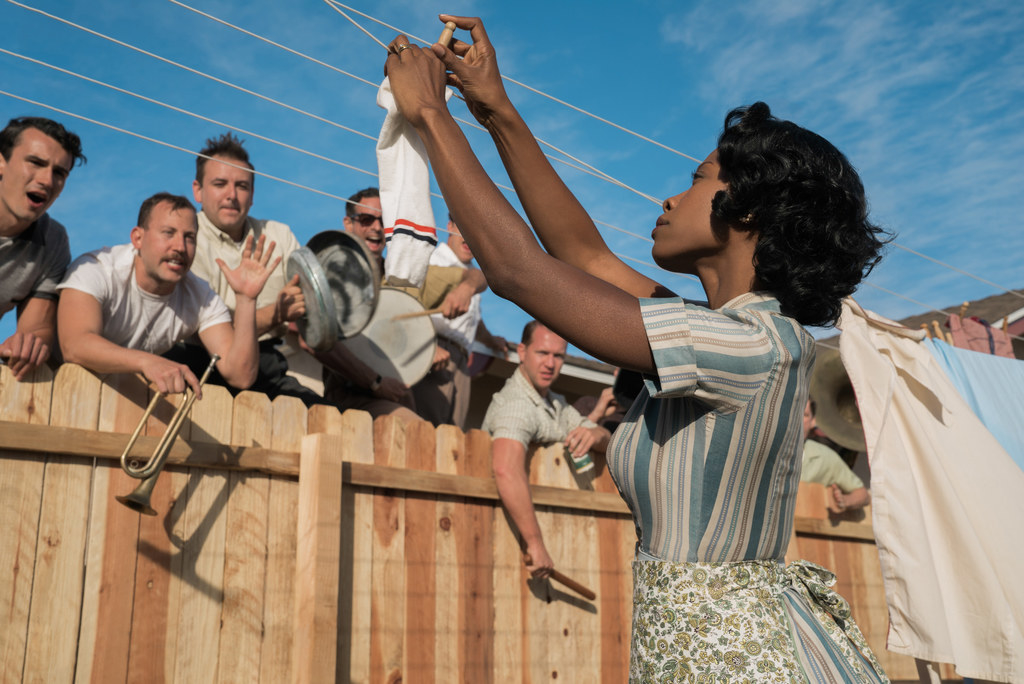
Both films center on figures whose assumptions about family and the future fall apart (Nicky in Suburbicon, Paul in Downsizing), and whose personal misfortunes are set up as small-scale equivalents of the systemic tragedies that afflict characters on the movies' outskirts. Nicky ends up genuinely, rather than begrudgingly, befriending Andy (Tony Espinosa), the black kid next door, after his home life implodes so spectacularly. Paul discovers economic and global realities he never gave much thought to — but only after the perfect, pocket-sized lifestyle he'd come to Leisureland for got derailed.
These choices feel like mediation, as if the experience of being marginalized — whether you’re targeted by hostile neighbors or used as dehumanized labor for a community you're not allowed to be a part of — needs to be filtered through Nicky and Paul in order to be relatable or accessible. Suburbicon and Downsizing are both driven by the desire to create some common ground with the audience through these characters who haven't been seeing the whole picture — to find a way into broader cultural questions of exclusion by way of these white protagonists and their more intimate dramas. They end up being dutiful meditations on guilt rather than stories about the people whose mistreatment and oppression they purport to be so interested in. The increasingly disastrous press tour their shared star Damon is currently in the midst of for Downsizing turns out to be, ironically, appropriate. Like these movies, Damon has been unable to stop himself from turning a conversation about something systemic into one about himself.
The Shape of Water, in contrast, roots itself from the start in the perspectives of characters whose identities render them invisible, interchangeable, or vulnerable to those in power. Its heroine, Elisa, who is disabled, and the allies she acquires (a gay man, a black woman, a foreigner) are people who already know very well, or are forced to accept, that they're on the wrong side of the picket fence. If it sounds schematic on the page, like a supergroup of the disenfranchised, it plays sweetly and straightforwardly onscreen. Just as the city they share isn't idealized — it's just where they live — the way these characters are drawn together isn't idealized, either. It's not the commonalities in how they've been demeaned or dismissed that ultimately unify them. It's that they are, both literally and figuratively, in a place to see each other more clearly than people like Strickland, with his gaze fixed on his imagined future and his home life cozily secured, miles away.
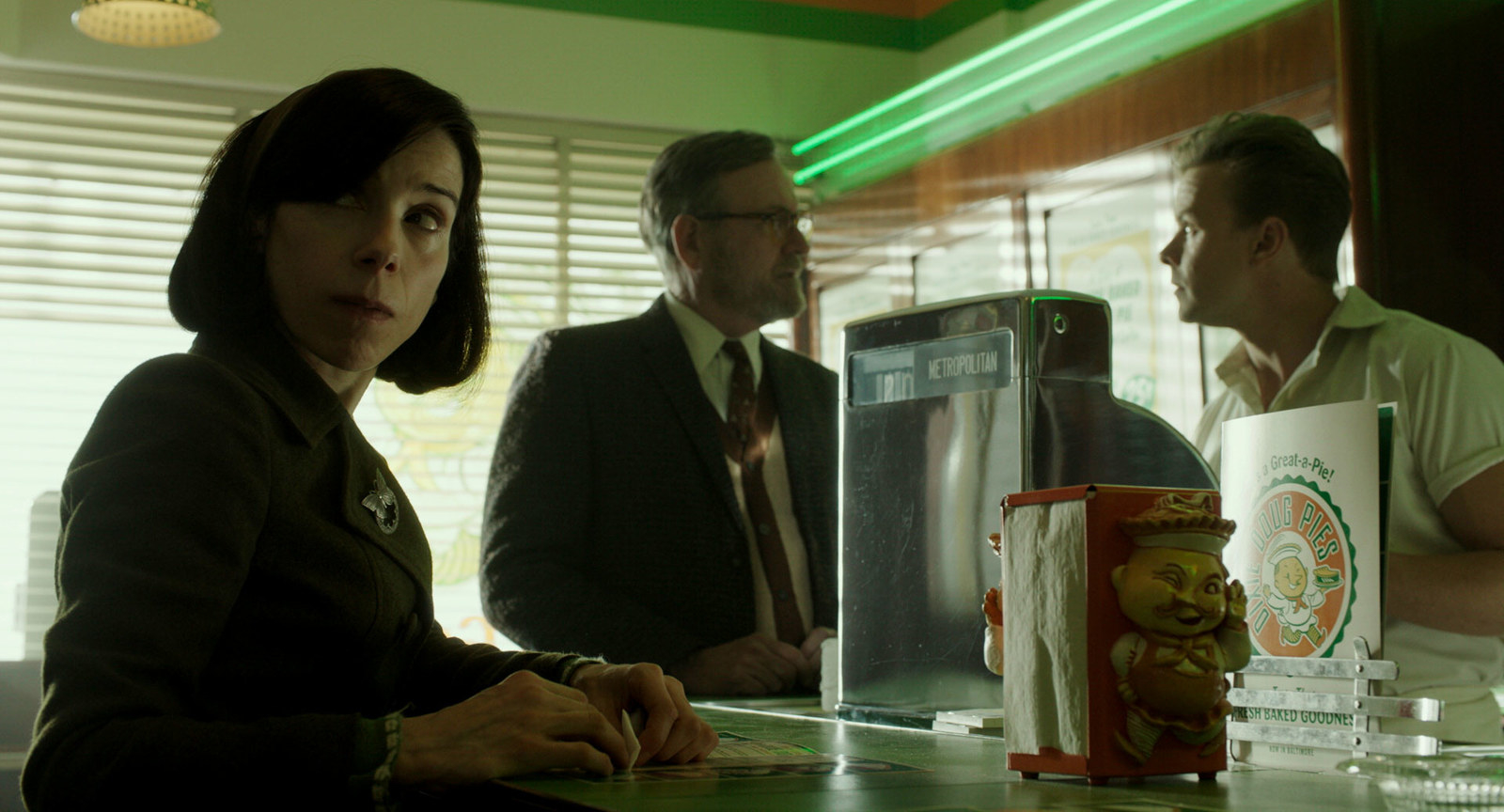
And they're not all immune to the warm lure of Americana either, as evidenced by Giles' (Richard Jenkins) doomed crush on the counterboy at a chain restaurant. He’s a strapping, dimpled young man who speaks with a twang and offers up easy chatter — a performance of down-home charm that's entirely synthetic, an act put on to sell pie that Giles can barely choke down. The arc of their two-scene relationship neatly encapsulates the ideas The Shape of Water expands on over the rest of its runtime (with much more resonance than Suburbicon or Downsizing): Everyone's free to fall in love with the idea of the idyllic American suburb — but it's not going to love everyone back the same way.
And maybe that idea won't appeal to everyone in the first place. The alienation The Shape of Water so efficiently lays out in two scenes, Get Out sums up in just one — its opening sequence: Andre (Lakeith Stanfield) strolls along a leafy suburban street with obvious and, it turns out, extremely warranted unease as a lone black man walking through a white neighborhood. It's a setting out of a Halloween movie, except instead of a masked slasher, Andre’s afraid of getting shot by the cops because a panicked local assumed he was a threat. When he’s snatched off the sidewalk, it's a double reversal — something scary was lurking out there in the dark — but it's also a reminder that for some, the idea of the suburbs has never been a sanctuary at all. ●
